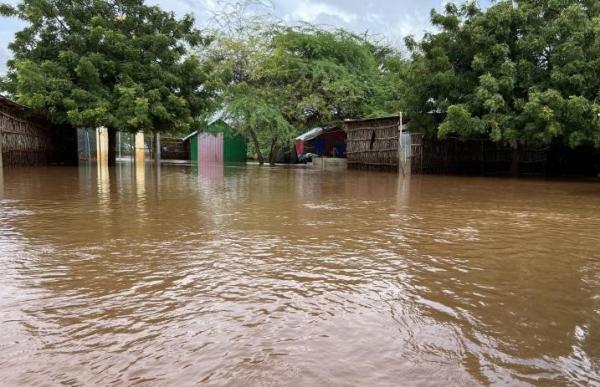Close to 700 000 people displaced by floods in Somalia
23 Nov 2023 by The Water Diplomat

Somali Disaster Management Agency director Mohamud Moalim Abdullahi announced on the 20th of November that 50 people have been killed and 687,235 people have been internally displaced as a result of flash floods in Somalia. The United Nations agency for the Coordination of Humanitarian Affairs (UNOCHA) stated that the number of people displaced by heavy rains and floods in Somalia has doubled in one week from 334,800 in the preceding week. Over half a million more people have been affected, bringing the total of affected people to 1.7 million, up from 1.17 million a week before. The International Rescue Committee (IRC) issued an alarm in response to severe flooding, warning that in addition to the internal displacement, thousands of homes and shelters have been destroyed and 1.5 million hectares of land could be destroyed in areas where the population rely heavily on agricultural productivity for their livelihoods. Some 5,433 populated areas are located in the flood risk zone of the Jubba and Shebelle rivers.
According to data from Floodlist, the level of the Jubba River rose by more than 5 metres above the long term average for this time of year. Across the Horn of Africa – in Somalia, Ethiopia and Kenya – extensive flooding has been reported since October. The rains are taking place within the ‘short rain’ period from October to December which are associated with the weather patterns of the region, but this season’s floods have been described by the UN as a once in a century event and associated with the El Nino phenomenon. The floods follow on the back of a period of three consecutive years of intense drought which decimated crops and caused abnormally high livestock deaths, as reported in February last year by The Water Diplomat.
Reliefweb reports that a Humanitarian Response Plan for 2023 which sought to raise US$2.6 billion to provide support to 7.6 million people remained underfunded, with only 39% of envisaged costs covered. The organization also makes the link to COP 28, stating that “people on the frontlines of the climate crisis in Somalia have done the least to contribute to climate change but are experiencing the gravest losses - this is the definition of climate injustice. COP28, less than two weeks away, presents the opportunity to address the impacts of climate on conflict-affected, climate-vulnerable communities with solutions that will target resilience, adaptation, and unequal gaps in climate finance.’’
Somalia is ranked in 172nd place out of 182 countries on the ND Gain country index which measures the vulnerability to climate change. The country already records some of the highest average temperatures in the world: in the southwest, the average annual temperature is 29°C. The number of days with a daily maximum temperature above 35° C is projected to rise strongly. The country is vulnerable to flooding and has already experienced major floods in 2006, 2018 and 2019. According to UNHCR there is evidence of increasing frequency and severity of flooding in Somalia.
The Juba and Shabelle river basins are the two most significant river basins in the country, both of which rise in the Ethiopian highlands, which contribute to 90% of the flow of these rivers. The plains of the Juba-Shabelle rivers are very fertile, and generally provide sufficient water for crop production, livestock and for domestic use. The low-lying areas along the Juba and Shabelle rivers often experience flooding,
